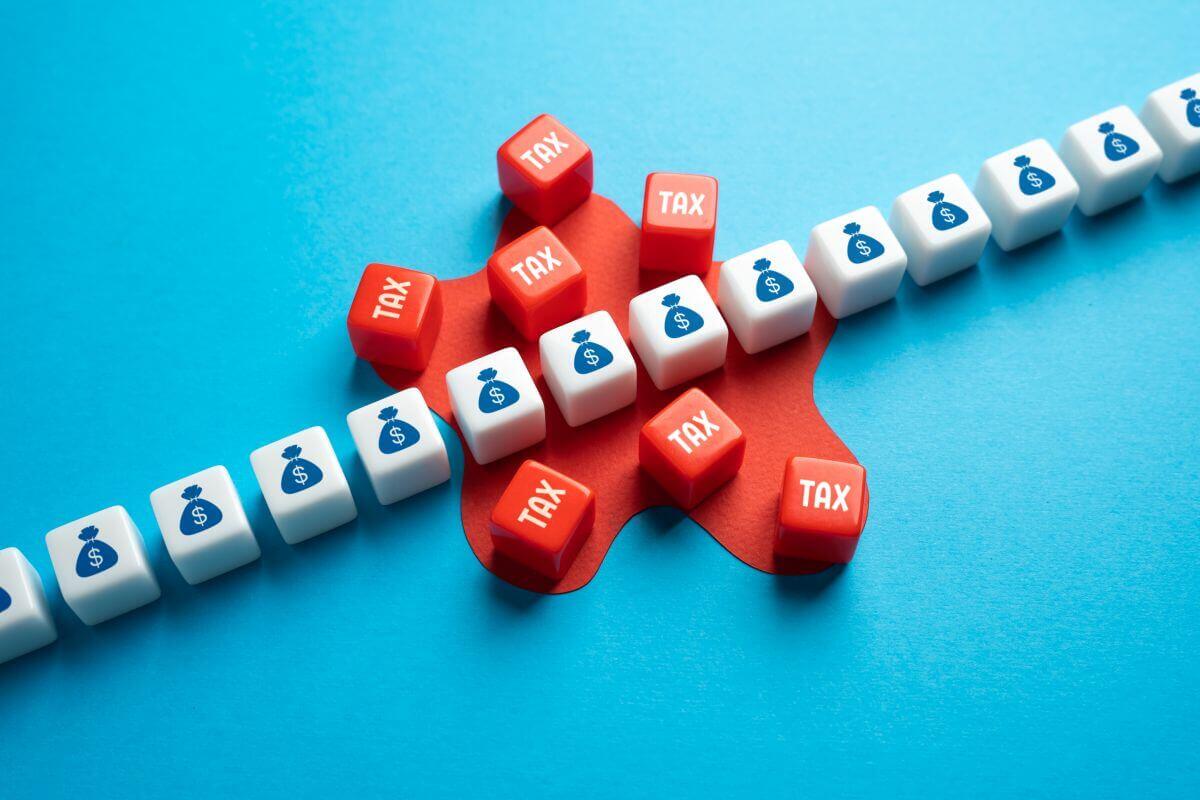Late on Thursday 9 April, the Treasurer released the Coronavirus Economic Response Package (Payments and Benefits) Rules 2020. These Rules set the formal eligibility criteria for businesses to receive the $1,500 fortnightly JobKeeper Payment for their eligible employees.
The Rules mostly reflect what the Government had previously announced in its recent Exposure Draft. However, there are important details in relation to the application process, timing of the subsidy payments and ongoing reporting obligations. Employers will need to pay eligible employees in advance of payment of the subsidy, which should be taken into account by employers when they consider applying for JobKeeper subsidy.
Importantly, the Rules both lay out a basic decline in turnover test and give the ATO the power to write an alternative decline in turnover test if (and only if) the basic test isn’t appropriate – but do not themselves outline this alternative test. Until the ATO publishes this alternative test your eligibility for the payment may still be unclear.
Below we outline 7 key points of the JobKeeper scheme:
- The JobKeeper Payment is intended to assist businesses affected by the Coronavirus stay open and keep employees in work.
- The JobKeeper scheme starts on 30 March 2020 and ends on 27 September 2020.
- A business that has suffered a substantial decline in turnover is entitled to a JobKeeper Payment of $1,500 per fortnight for each eligible employee. It is a condition of entitlement that the business has paid salary and wages of at least that amount to the employee in the fortnight.
- The decline in turnover test for most businesses will be a 30% decline compared to the same period in 2019 – however see below for other applicable declines. While growth-phase startups may be able to qualify for JobKeeper using an alternative decline in turnover test, this is unlikely to assist pre-revenue startups.
- The turnover test needs to be met only once – it is not re-assessed every month even though turnover is to be reported to the ATO.
- A single non-employee “business participant” such as a director, beneficiary of a trust or sole trade will also be entitled to a JobKeeper Payment of $1,500 per fortnight – this participant must be someone who is actively engaged in operating the business.
- The JobKeeper scheme is administered by the ATO – which has yet to open the application or reporting process. The Commissioner pays the JobKeeper Payment to entities shortly after the end of each calendar month, for fortnights ending in that month.
Which businesses are eligible for the JobKeeper Payment?
The Rules confirm that employers (including not-for-profits) will be eligible for the subsidy if, at the time of applying:
- their business has an aggregated turnover of less than $1 billion (for income tax purposes) and they estimate their turnover has fallen or will likely fall by 30 per cent or more; or
- their business has an annual turnover of $1 billion or more (for income tax purposes) and they estimate their turnover has fallen or will likely fall by 50 per cent or more; and
- their business is not subject to the Major Bank Levy.
The first two of the tests above are part of the basic decline in turnover test. The period of time over which the turnover must have fallen is either this month or this quarter in 2020 compared to the same month or quarter in 2020. For businesses where this comparison doesn’t appropriately reflect the impact of COVID-19 to their business, the Rules give the ATO the power to proscribe alternative decline in turnover tests for classes of entities, which they have not yet done. However the Explanatory Memorandum to the Rules gives examples of businesses who would not have an appropriate 2019 comparative period – a drought affected business and an early-stage startup. In the first scenario a suggested alternative decline in turnover test is applied to compare to a period 2017 (comparatively drought-free) and for the second, a monthly average turnover is calculated and used as the appropriate comparative.
The Rules also confirm that self-employed individuals will be eligible if they meet the relevant turnover criteria. Other small business operators, including trusts, partnerships and director operated companies, may also be able to claim payments for one “eligible business participant”, such as a partner or director, in addition to any eligible employees.
The Rules exclude various types of employers from participation in this scheme, such as government agencies, local councils, and businesses subject to the Major Bank Levy, companies in liquidation, or sole traders with a trustee in bankruptcy appointed.
Charities registered with the Australian Charities and Not-for-profits Commission (ACNC), will be eligible for the subsidy if they estimate their turnover has or will likely fall by 15 per cent or more relative to a comparable period. This lower turnover decline test does not apply to universities and non-government schools that are registered charities, who will remain subject to the turnover decline tests set out above for other not-for-profits and businesses.
IMPORTANT: If a business does not meet the drop in turnover test at the time the scheme commences, the Rules indicate that the employer can apply to receive the payment at a later time, once the turnover test has been met. In this case, the JobKeeper subsidies are only payable for the fortnight the application is made and then up to 27 September 2020.
The JobKeeper scheme is NOT compulsory and employers are not obliged to seek JobKeeper support for their employees, even if they are eligible to do so. Employers must elect to participate in the scheme. They will need to make an application to the Australian Taxation Office (ATO) and provide supporting information demonstrating a downturn in their business. However, an employer cannot be selective in their application. If the Employer applies for one eligible employee, they must apply for all eligible employees - “(an) employer cannot select which eligible employees will participate in the scheme. This ‘one in, all in’ rule is a key feature of the scheme”.
Which Employees are eligible for the JobKeeper Payment?
The Rules confirm that employees will be eligible for the JobKeeper payments if:
- they were on their books on 1 March 2020 and continue to be engaged by that employer — including full-time, part-time, long-term casuals ('those employees who have been with their employer on a regular and systematic basis for at least the previous 12 months as at 1 March 2020') and stood down employees;
- they were an Australian citizen, the holder of a permanent visa, or a Special Category (Subclass 444) Visa Holder as at 1 March 2020;
- they were a resident for Australian tax purposes on 1 March 2020;
- they were a permanent employee of the employer or, if a long-term casual employee, not a permanent employee of any other employer;
- they have NOT received a JobKeeper Payment from another employer.
What are the rules for employees receiving PARENTAL LEAVE PAY?
Employees receiving Parental Leave Pay from Services Australia are not eligible for the JobKeeper Payment. However, employees on parental leave from their employer will be eligible. Where an employee is accessing support though Services Australia and the employer will be eligible for the JobKeeper Payment, the employee should advise Services Australia of their change in circumstances online at my.gov.au or by telephone to avoid incurring a debt that will be required to be repaid.
What about employees receiving WORKERS COMPENSATION?
Employees receiving workers compensation will be eligible for the JobKeeper Payment if they are working, for example on reduced hours, but will generally not be eligible if they are not working.
What are the rules for CASUAL WORKERS eligible for the JobKeeper payment?
Casual employees eligible for the JobKeeper Payment are those employees who have been with their employer on a regular and systematic basis for at least 12 months as at 1 March 2020. A casual employee will not be disadvantaged if their employer has changed in the last 12 months by reason of a transfer within group entities, or a sale of business (and equivalent for non-profit bodies). But it appears a change in a casual’s employer as a result of an insourcing or outsourcing of work will restart a casual’s period of service for this purpose and make them ineligible.
What happens with eligible employers who have already STOOD DOWN their employees before the JobKeeper scheme was released?
Eligible employers who have stood down their employees before the commencement of this scheme will be able to participate. Employees that are re-engaged by a business that was their employer on 1 March 2020 will be eligible.
What is the PAYMENT PROCESS?
Eligible employers will be paid $1,500 per fortnight per eligible employee. Eligible employees will receive, at a minimum, $1,500 per fortnight, before tax, and employers are able to top-up the payment. Where employers participate in the scheme, their employees will receive this payment as follows.
- If an employee receives $1,500 or more in income per fortnight before tax, they will continue to receive their regular income according to their prevailing workplace arrangements. The JobKeeper Payment will assist their employer to continue operating by subsidising all or part of the income of their employee.
- If an employee would otherwise receive less than $1,500 in income per fortnight before tax, their employer must pay their employee, at a minimum, $1,500 per fortnight before tax.
- If an employee has been stood down, their employer must pay their employee, at a minimum, $1,500 per fortnight before tax.
No Superannuation guarantee payments are required to be paid on any additional payment made because of the JobKeeper Payment.
When will employers receive the JobKeeper Payment?
Payments will be made to the employer monthly in arrears by the ATO. However, for the month of April, the Commissioner can make an advance payment.
The subsidy will start on 30 March 2020, with the first payments to be received by employers in the first week of May. Businesses will be able to register their interest in participating in the Payment from 30 March 2020 at ato.gov.au.
For more details check Treasury Fact Sheet
Azure Group centres of Excellence
To manage the ongoing technical issues for all of our clients including the JobKeeper eligibility and payment plus other Stimulus measures and the Fair Work changes Azure Group have established the following two centres of excellence:
- COVID-19 Stimulus Centre of Excellence; and
- Fair Work Centre of Excellence.
Each of the above centres of excellence has a dedicated team of technical specialists. If you have any specific questions about these measures please contact our centres of excellence via email: covid19queries@azuregroup.com.au
Related articles:
Jobkeeeper Extension: Now is the time to consider what the extension means for your Business, published September 18, 2020
Extension of JobKeeper and Loan Scheme, published July 23, 2020
You can still Raise Capital in 2020, published July 08, 2020
Did you apply for the NSW $3,000 Small Business Recovery Grant, published July 07, 2020
Things to consider when withdrawing Super before and after June 30, published June 26, 2020
Consider your timing when paying Bonuses to Employees, published June 25, 2020
How will COVID-19 affect your End of Financial Year Tax return?, published June 15, 2020
Is your business Tax ready for EOFY?, published June 11, 2020
COVID-19: 5 Steps Plan to surviving the next 6 month as a business, published June 02, 2020
COVID-19: How to motivate your team while working remotely?, published May 18, 2020
Expanding globally during COVID-19: Risky business or perfect timing?, published May 07, 2020
Cashflow is a lifeblood of your Business, especially during a pandemic such as Coronavirus, published April 22, 2020
Finding opportunities in a crisis and how to recover on the other side of COVID-19?, published April 20, 2020
COVID-19: What does 'Standing Down my team' mean to my Business?, published April 16, 2020
Working from home during Coronavirus: What expenses are Tax Deductible?, published April 9, 2020
COVID-19: EMDG extra funding of $49.8 million to help Exporters, published April 7, 2020
Startups and Scaleups: R&D Tax Incentive FY2019 deadline extended due to Coronavirus, published April 6, 2020
What is the difference between JobSeeker and JobKeeper? Do you know what you're eligible for?, published April 2, 2020
Should you do Business Planning during CoVID-19?, published 27 Mar, 2020
A second CoVID-19 Stimulus for Businesses, published Mar 24, 2020
Financial relief for business experiencing difficulty due to CoVID-19 and State Government Support, published Mar 21, 2020
What are the benefits of Coronavirus Stimulus Package for businesses?, published Mar 13, 2020
Have you noticed our #FridayExpertTips... here's one that relates to #StimulusPackage
"Anyone impacted by CoVID-19: ATO Relief is NOT AVAILABLE AUTOMATICALLY. You will need to apply for relief. Contact ATO Emergency Support Infoline 1800 806 218 or get in touch with us."
This article is intended to provide general information only, and is not to be regarded as legal or financial advice. The content is based on current facts, circumstances, and assumptions, and its accuracy may be affected by changes in laws, regulations, or market conditions. Accordingly, neither Azure Group Pty Ltd nor any member or employee of Azure Group or associated entities, undertakes responsibility arising in any way whatsoever to any persons in respect of this alert or any error or omissions herein, arising through negligence or otherwise howsoever caused. Readers are advised to consult with qualified professionals for advice specific to their situation before taking any action.







Comment